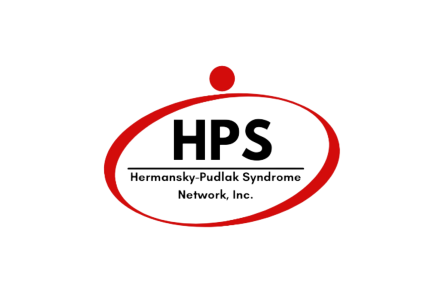Hermansky-Pudlak Syndrome Network
Cycle 1
Hermansky-Pudlak Syndrome (HPS) is a genetic metabolic disorder, characterized by albinism, visual impairment, and a platelet dysfunction that results in prolonged bleeding.
Last updated 04/30/2025
Clinical
Disease Class
Developmental anomalies during embryogenesis
Gastroenterological diseases
Genetic diseases
Hematological diseases
Inherited metabolic disorder
Ophthalmic diseases
Respiratory diseases
Skin diseases
Transplant-related diseases
Body Systems
Hematopoietic / Lymphatic / Immune
Metabolic
Renal / Urinary / Excretory
Respiratory
Organs
Blood
Eyes
Hair
Intestines
Kidneys
Lungs
Skin
Known Genetic Link
Yes, one or more genes directly cause the condition
causative_genes
AP3B1
AP3D1
BLOC1S3
DTNBP1
HPS1
HPS11 (BLOC1S5)
HPS3
HPS4
HPS5
HPS6
PLDN
contributory_genes
None specified / unknown
Type of Inheritance
Autosomal recessive
Newborn Screening
No
Disease Mechanism(s)
Inherited metabolic disorder
Transport defect
mTOR pathways dysregulation
Age of Onset
Prebirth
Average Age at Diagnosis
Middle childhood (6-11)
Life Expectancy
Adulthood (age 18-64)
Affected Sex(es)
Female
Male
National Prevalence
1001-10000
Global Prevalence
1001-10000
National Incidence
Less than 10
Global Incidence
Less than 10
Populations and/or ancestry with higher prevalence
We have a Founder's Effect in Puerto Rico.
Symptoms / Phenotypes
breathing difficulties
bruising susceptibility
cramps
diarrhea
gastrointestinal disorders
hemorrhage/bleeding
inflammatory bowel disease (IBD)
kidney disease / nephropathy
menorrhagia
nose bleed / epistaxis
oral sore / ulcer
Prolonged bleeding following procedure
pulmonary fibrosis
vision problems
vitiligo
Biomarkers
Diagnostic
· Genetic testing, Platelet Function test, Platelet Electron Microscopy, skin or hair melanin content
Monitoring
· 6 Minute Walk, Bronchoaveolar Lavage Fluid Analysis, Platelet function, Ocular Assessment
Prognostic
· Pulmonary Function Testing, High-Resolution CT, Markers of Oxidative Stress
Therapeutic
· Lung serum biomarkers of fibrosis progression, improvement in platelet aggregation, reduction in cytokines or inflammatory mediators
Existing Therapies
Off-Label Drug Use
Organizational & Research
Cell Lines
Fibroblasts
iPSCs
Type 2 pneumocytes
Cell Lines, Institution
Boston University
NIH
Cell Lines, Involvement
Consulted
Cell Lines, share
Some of our cell lines are freely available
Disease Model
None
Disease Model, share
N/A
Clinical Trial Role
Data sharing
Focus group
Funding
Meeting with regulators
Recruitment and outreach, patients
Results dissemination, publication
Study protocol design, review
Travel coordination
Biobank, Institution
NIH
Ponce Health Sciences University
Biobank, Involvement
Consulted
Center of Excellence, Institution
None
Registry
Yes, we have a registry that we created
Data Collected, Registry
Clinical data
Genetic data
Imaging data
Medication usage
Patient contact info
Patient-reported data
Data Entered by, Registry
Patients
Platform, Registry
IAMRARE
Natural History Study
Yes, we have collaborated on a natural history study
Data Collected, Natural History Study
Electronic health records/electronic medical records
Prospective data
Retrospective data
Platform, Natural History Study
Not specified
FDA Patient Listening Session
No
FDA Patient-Focused Drug Development (PFDD) Program
Yes
ICD Codes
Yes, we have an ICD-10 code specific to our exact disease
Diagnostic Guidelines
No
Science Advisory Board Policies
Yes, not willing to share SAB policies
Research Network Policies
Has CRN but no policies
Research Roadmap
Yes we have a Research Roadmap, and will share policies
International Chapters
None
International Partners
None
